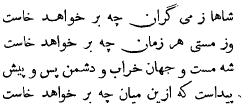This article is primarily intended as a “follow-up” of two previous ones on the historical records of Portuguese India, thus serving to remind historians of the importance of these documents. The articles to which I refer are “A preliminary report on the historical records at Goa”, by Surendra Nath Sen (88 pp., Calcutta, 1925, reprinted in his Studies in Indian History (1930)), and “Portuguese India and its historical records”, by the late J. LeRoy Christian (Hispanic-American Historical Review, vol. xxv, pp. 140–151, February, 1945). These two articles are all that I have been able to find in English about the Goa archives, and they are complemented by the recently published “Roteiro do Cartório Geral do Estado da India”, by Panduranga Pissurlencar, reprinted from No. 309 of the Boletim Geral das Colónias (Lisboa, 1951). This fourteen-page summary catalogue of the Goa archives by their scholarly director advantageously replaces the ostensibly fuller “Index alfabetico, chronologico e remissive”, published serially by Tovar de Albuquerque in the Oriente Portuguez (first series, 1910–1918), which is so riddled with mistakes, and compiled with such lack of system, as to be worse than useless as a guide to the material in the archives. In so far as possible, I have avoided repeating what is already recorded in the previous articles of Nath Sen and LeRoy Christian, confining myself to amplifying or correcting their statements where necessary. I have also limited myself to describing the codices which I studied during my stay at Goa in September–October, 1951. As will be seen from a comparison of the codices described hereunder with those listed in Dr. Pissurlencar's Roteiro, I was only able to study a relatively small proportion of the whole; nor was a thorough examination of all of those which I did see possible in the month at my disposal. Since virtually everything dated prior to 1600 which still exists in the archives has already been published by Cunha Rivara and others, I confined my own investigations to the period 1600–1740, the later date being taken as marking the end of effective Portuguese power in India with the loss of the “provincia do Norte” to the Marāthās after the disastrous if hard-fought Bassein campaign of 1737–1739. My own interests being chiefly concerned with the Far East, I naturally concentrated on Macao and Timor; but I trust that I have noted sufficient material dealing with East Africa, the Persian Gulf, India, Ceylon, and Malacca, to show the variety and richness of this little-used archive. It may be added that much of the material relating to India proper has been printed in the two series of the Archivo Portuguez Oriental, in the two series of O Oriente Portuguez, and in the Boletim do Institute Vasco da Gama, as explained in the final note to this article.
 Lei Li An Important Source for the Study of the Ming Bureaucracy
Lei Li An Important Source for the Study of the Ming Bureaucracy
 Ch'i Ch'ing Nien Piao of the Ming History
Ch'i Ch'ing Nien Piao of the Ming History

 wuh =
wuh =  wu
wu  jy
jy

 Lei Li An Important Source for the Study of the Ming Bureaucracy
Lei Li An Important Source for the Study of the Ming Bureaucracy


 Ch'i Ch'ing Nien Piao of the Ming History
Ch'i Ch'ing Nien Piao of the Ming History
 Chang T'ing-yü and his colleagues and completed in 1736 is the first of the Standard Histories (īE
Chang T'ing-yü and his colleagues and completed in 1736 is the first of the Standard Histories (īE 



 , of which many translations exist. It may be interesting to look at a few examples of
, of which many translations exist. It may be interesting to look at a few examples of  wuh =
wuh =  wu
wu 
 à passer de choses présentes dans son esprit, —sous forme de concept ou de jugement, comportant un assentiment fondé sur la science ou l'opinion ou sur le postulat et l'admission,—à des choses qui n'y sont pas présentes.”
à passer de choses présentes dans son esprit, —sous forme de concept ou de jugement, comportant un assentiment fondé sur la science ou l'opinion ou sur le postulat et l'admission,—à des choses qui n'y sont pas présentes.”

